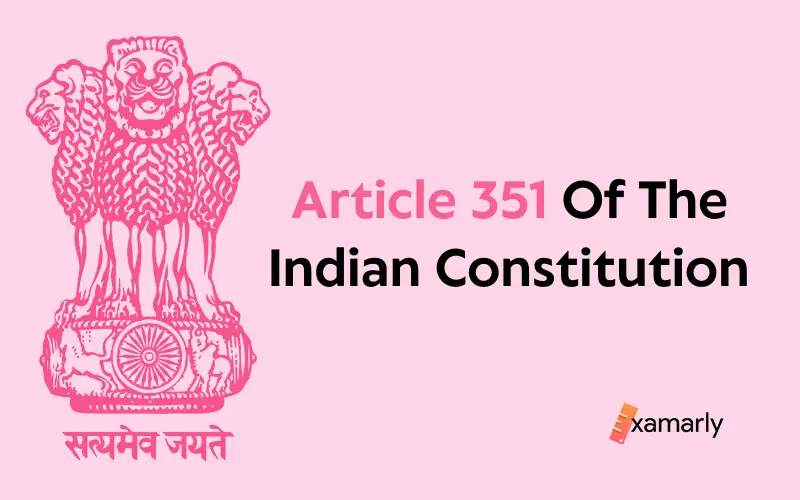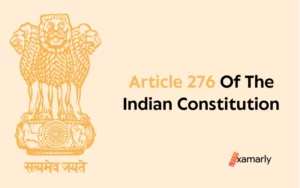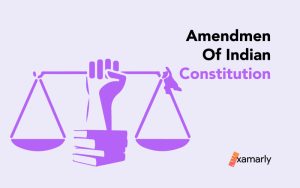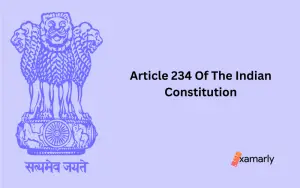The Indian Constitution, adopted in 1950, lays out the fundamental principles and laws of the world’s largest democracy. Among its many provisions is Article 351, which lays out the directive for the development of the Hindi language.
Article 351 of the Indian Constitution plays an important role in ensuring that Hindi, one of the two official languages of the Indian government, is developed and promoted throughout the country.
In this blog post, we will take a closer look at the history and significance of Article 351 and how it has been implemented in practice. We’ll also discuss the ways in which the Indian government has sought to promote Hindi and the impact that Article 351 has had on the development of the language.
This post will provide a comprehensive understanding of one of the most important elements of the Indian Constitution.
Background of Article 351 of the Indian Constitution
Do you know Draft Article 301I was introduced as an amendment? Here’s a precise background detail on Article 351 of the Indian Constitution explaining the arguments around it.
- Draft Article 301I (now Article 351 of the Indian Constitution 1950) was not present initially, in the original draft of the Constitution in 1948.
- It was introduced by a member of the Drafting Committee on September 12th, 1949.
- The article directs the government to promote the spread of the Hindi language and develop it as a medium of expression.
- One member argued that the development of Hindi should be accompanied by the development of other regional languages.
- Another member disagreed with the assumption that Hindi needed development.
- A third member accepted the idea of promoting Hindi but warned against neglecting other regional languages in the process.
- Not much debate was seen regarding the article and it was added to the Constitution without any changes on September 14th, 1949.
Article 351 Of the Indian Constitution – Directive For Development Of The Hindi Language
Article 351 of the Indian Constitution provides an important framework for guiding the development and promotion of Hindi, and it is an essential element of the Indian Constitution.
The Clause – As it is & Explained
It shall be the duty of the Union to promote the spread of the Hindi language, to develop it so that it may serve as a medium of expression for all the elements of the composite culture of India and to secure its enrichment by assimilating without interfering with its genius, the forms, style and expressions used in Hindustani and in the other languages of India specified in the Eighth Schedule, and by drawing, wherever necessary or desirable, for its vocabulary, primarily on Sanskrit and secondarily on other languages.
Article 351 of the Indian Constitution lays out the duty of the Union, or the National Government, to promote the spread and development of the Hindi language. The article states that the Union must take steps to ensure that Hindi can serve as a medium of expression for the diverse cultural elements of India. This includes assimilating, without altering the unique characteristics of Hindi, the forms, style, and expressions used in other Indian languages, such as Hindustani, and those languages specified in the Eighth Schedule of the Indian Constitution.
The article also states that the Union must strive to enrich Hindi by drawing, when necessary or desirable, on the vocabulary of other languages, with a primary focus on Sanskrit. This is to promote the use of Hindi as a medium of communication and a language of expression and to keep the connection of Hindi with Indian culture, history, and linguistic heritage. By doing so, it aims at promoting the language across the diverse cultural regions of the country.
Conclusion
In conclusion, Article 351 of the Indian Constitution plays an important role in ensuring the development and promotion of the Hindi language throughout India.
The article recognizes the importance of language in preserving and promoting culture and cultural identity, and it gives Hindi, which is spoken by a large number of people in India, a special status as one of the two official languages of the Indian government, the other being English.
The Constitution also recognizes the need to preserve and promote the linguistic diversity of India, as it includes provisions for the protection and promotion of regional languages. Hence, it is important to note that the aim of Article 351 of the Indian Constitution is not to impose Hindi on non-Hindi speaking regions, but to enhance and develop the language, in a way that it serves as an inclusive medium of expression for diverse cultures of India, while also promoting multilingualism.
The implementation of Article 351 has been a subject of much debate and discussion, and it remains a challenging task to find a balance between promoting Hindi while also protecting and promoting other regional languages.
You Might Also Like To Read –
- Article 343 Of The Indian Constitution
- Article 344 Of The Indian Constitution
- Article 345 Of The Indian Constitution
- Article 346 Of The Indian Constitution
- Article 347 Of The Indian Constitution
- Article 348 Of The Indian Constitution
FAQs Related to Article 351 of the Indian Constitution
Which part of the Indian Constitution does Article 351 belong to?
Article 351 of the Indian Constitution belongs to Chapter III (Special Directives) of Part XVII which is called Official Language.
Which schedule of the Indian Constitution talks about Official Languages?
The Eighth Schedule of the Indian Constitution mentions the Official Languages of India.
Which languages are mentioned in the Eighth Schedule of the Indian Constitution?
The Eighth Schedule of the Indian Constitution consists of the following 22 languages:- (1) Assamese, (2) Bengali, (3) Gujarati, (4) Hindi, (5) Kannada, (6) Kashmiri, (7) Konkani, (8) Malayalam, (9) Manipuri, (10) Marathi, (11) Nepali, (12) Odia, (13) Punjabi, (14) Sanskrit, (15) Sindhi, (16) Tamil, (17) Telugu, (18) Urdu (19) Bodo, (20) Santhali, (21) Maithili and (22) Dogri.
When was Article 351 of the Indian Constitution adopted?
Draft Article 301I (Article 351 of the Constitution of India 1950) was adopted on 14th September 1949.






